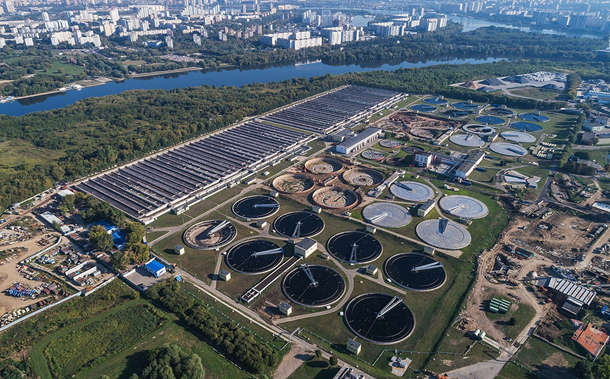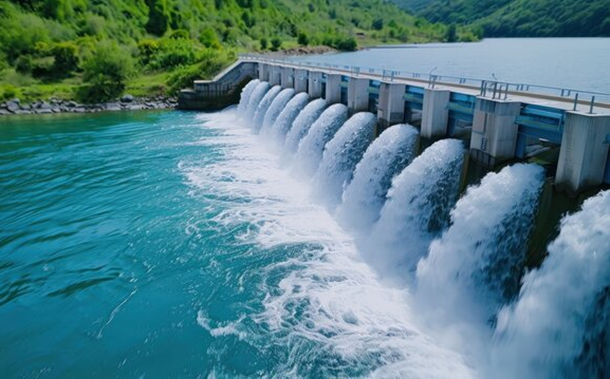The Influence of Recycled Coarse Aggregate Content on the Properties of High-Fly-Ash Self-Compacting Concrete
Downloads
Doi:10.28991/CEJ-SP2024-010-04
Full Text:PDF
Downloads
[2] Marinković, S., Josa, I., Braymand, S., & ToŠ¡ić, N. (2023). Sustainability assessment of recycled aggregate concrete structures: A critical view on the current state-of-knowledge and practice. Structural Concrete, 24(2), 1956–1979. doi:10.1002/suco.202201245.
[3] Tu, T. Y., Chen, Y. Y., & Hwang, C. L. (2006). Properties of HPC with recycled aggregates. Cement and Concrete Research, 36(5), 943–950. doi:10.1016/j.cemconres.2005.11.022.
[4] Tuyan, M., Mardani-Aghabaglou, A., & Ramyar, K. (2014). Freeze-thaw resistance, mechanical and transport properties of self-consolidating concrete incorporating coarse recycled concrete aggregate. Materials & Design, 53, 983–991. doi:10.1016/j.matdes.2013.07.100.
[5] Padmini, A. K., Ramamurthy, K., & Mathews, M. S. (2009). Influence of parent concrete on the properties of recycled aggregate concrete. Construction and Building Materials, 23(2), 829–836. doi:10.1016/j.conbuildmat.2008.03.006.
[6] Santos, S., da Silva, P. R., & de Brito, J. (2019). Self-compacting concrete with recycled aggregates – A literature review. Journal of Building Engineering, 22, 349–371. doi:10.1016/j.jobe.2019.01.001.
[7] Ryan, P. C., & O'Connor, A. (2014). Examination of Self-Compacting Concrete Options for Marine Bridge Applications. Journal of Bridge Engineering, 19(9), 04014032. doi:10.1061/(asce)be.1943-5592.0000541.
[8] Elevado, K. J. T., Galupino, J. G., & Gallardo, R. S. (2018). Artificial Neural Network (ANN) modelling of concrete mixed with waste ceramic tiles and fly ash. GEOMATE Journal, 15(51), 154–159. doi:10.21660/2018.51.58567.
[9] Bouzoubaí¢, N., & Lachemi, M. (2001). Self-compacting concrete incorporating high volumes of class F fly ash. Cement and Concrete Research, 31(3), 413–420. doi:10.1016/s0008-8846(00)00504-4.
[10] Douglas, R. P. (2004). Properties of self-consolidating concrete containing type F fly ash. Portland Cement Association, Washinton, United States.
[11] da Silva, S. R., & Andrade, J. J. de O. (2022). A Review on the Effect of Mechanical Properties and Durability of Concrete with Construction and Demolition Waste (CDW) and Fly Ash in the Production of New Cement Concrete. Sustainability, 14(11), 6740. doi:10.3390/su14116740.
[12] Malazdrewicz, S., Adam Ostrowski, K., & Sadowski, Š. (2023). Self-compacting concrete with recycled coarse aggregates from concrete construction and demolition waste – Current state-of-the art and perspectives. Construction and Building Materials, 370, 130702. doi:10.1016/j.conbuildmat.2023.130702.
[13] Panda, K. C., & Bal, P. K. (2013). Properties of self-compacting concrete using recycled coarse aggregate. Procedia Engineering, 51, 159–164. doi:10.1016/j.proeng.2013.01.023.
[14] Tang, W. C., Ryan, P. C., Cui, H. Z., & Liao, W. (2016). Properties of Self-Compacting Concrete with Recycled Coarse Aggregate. Advances in Materials Science and Engineering, 2016, 1–11. doi:10.1155/2016/2761294.
[15] Rizwan, S. A., Irfan-Ul-Hassan, M., Rahim, A., Ali, S., Sultan, A., Syamsunur, D., & Md Yusoff, N. I. (2022). Recycled Coarse Aggregate for Sustainable Self-Compacting Concrete and Mortar. Advances in Materials Science and Engineering, 2022, 1–12. doi:10.1155/2022/4566531.
[16] Jagadesh, P., Juan-Valdés, A., Guerra-Romero, M. I., Morán-Del Pozo, J. M., García-González, J., & Martínez-García, R. (2021). Effect of design parameters on compressive and split tensile strength of self-compacting concrete with recycled aggregate: An overview. Applied Sciences, 11(13), 6028. doi:10.3390/app11136028.
[17] Martínez-garcía, R., Jagadesh, P., Búrdalo-salcedo, G., Palencia, C., Fernández-raga, M., & Fraile-fernández, F. J. (2021). Impact of design parameters on the ratio of compressive to split tensile strength of self"compacting concrete with recycled aggregate. Materials, 14(13), 3480. doi:10.3390/ma14133480.
[18] Yu, F., Wang, M., Yao, D., & Yang, W. (2022). Study on Flexural Behavior of Self-Compacting Concrete Beams with Recycled Aggregates. Buildings, 12(7), 881. doi:10.3390/buildings12070881.
[19] Ahmed, S., El-Zohairy, A., Eisa, A. S., Mohamed, M. A. E. A. B., & Abdo, A. (2023). Experimental Investigation of Self-Compacting Concrete with Recycled Concrete Aggregate. Buildings, 13(4), 856. doi:10.3390/buildings13040856.
[20] Tang, W., Khavarian, M., Yousefi, A., Landenberger, B., & Cui, H. (2023). Influence of Mechanical Screened Recycled Coarse Aggregates on Properties of Self-Compacting Concrete. Materials, 16(4), 1483. doi:10.3390/ma16041483.
[21] Lekshmy Raghavan, P., & Nalanth, N. (2023). Analysis of Durability in Self Compacting Concrete with Recycled Concrete Aggregates. Civil Engineering and Architecture, 11(4), 1824–1834. doi:10.13189/cea.2023.110413.
[22] TCVN 11969:2018. (2018). Recycled coarse aggregate for concrete. Construction Materials Institute, Ministry of Construction, Hanoi, Vietnam.
[23] Okamura, H., Ozawa, K., & Ouchi, M. (2000). Self-compacting concrete. Structural Concrete, 1(1), 3–17. doi:10.1680/stco.2000.1.1.3.
[24] HÆ°ng, V. V., Phố, Ä. Q., Văn, T. H., & Quang, L. V. (2022). Research on the effects of lime and silica fume content on the physical and mechanical properties of cement mortar using high fly ash content. Journal of Materials & Construction - Ministry of Construction, 12(01), 255. doi:10.54772/jomc.01.2022.255.
[25] TCVN 12209:2018. (2018). Self-compacting concrete - Specification and test method. Construction Materials Institute, Ministry of Construction, Hanoi, Vietnam.
[26] SSC-028 (2005). The European Guidelines for Self-Compacting Concrete. The European Precast Concrete Organization, BIBM 2005, 1-68. Available online: http://www.voscc.dk/_root/media/17621_SCC%20guidelines_may%202005.pdf (accessed on March 2024).
[27] TCVN 3105:2022. (2022). Concrete and Concrete Mixtures - Sampling, Fabrication and Maintenance of Test Samples. Construction Materials Institute, Ministry of Construction, Hanoi, Vietnam.
[28] TCVN 3118:2022. (2022). Hardened concrete – Test method for compressive strength. Construction Materials Institute, Ministry of Construction, Hanoi, Vietnam.
[29] Quang, N. T., CÆ°á»”ng, T. V., Tí¢n, N. N., Tí¢n, N. H., & Giang, N. H. (2021). An experimental study on the effect of the proportions of recycled coarse aggregates on the evolution of concrete compressive strength and young's modulus. Journal of Science and Technology in Civil Engineering (JSTCE) - HUCE, 15(1V), 48–59. doi:10.31814/stce.nuce2021-15(1v)-05.
[30] Andreu, G., & Miren, E. (2014). Experimental analysis of properties of high performance recycled aggregate concrete. Construction and Building Materials, 52, 227–235. doi:10.1016/j.conbuildmat.2013.11.054.
[31] TCVN 3119:2022. (2022). Hardened concrete – Test method for flexural tensile strength. Construction Materials Institute, Ministry of Construction, Hanoi, Vietnam.
[32] Grdic, Z. J., Toplicic-Curcic, G. A., Despotovic, I. M., & Ristic, N. S. (2010). Properties of self-compacting concrete prepared with coarse recycled concrete aggregate. Construction and Building Materials, 24(7), 1129–1133. doi:10.1016/j.conbuildmat.2009.12.029.
[33] TCVN 9337:2012. (2012). Heavy concrete - Method for electrical indication of concrete's ability to resist chloride ion penetration. Construction Materials Institute, Ministry of Construction, Hanoi, Vietnam.
- Authors retain all copyrights. It is noticeable that authors will not be forced to sign any copyright transfer agreements.
- This work (including HTML and PDF Files) is licensed under a Creative Commons Attribution 4.0 International License.![]()














